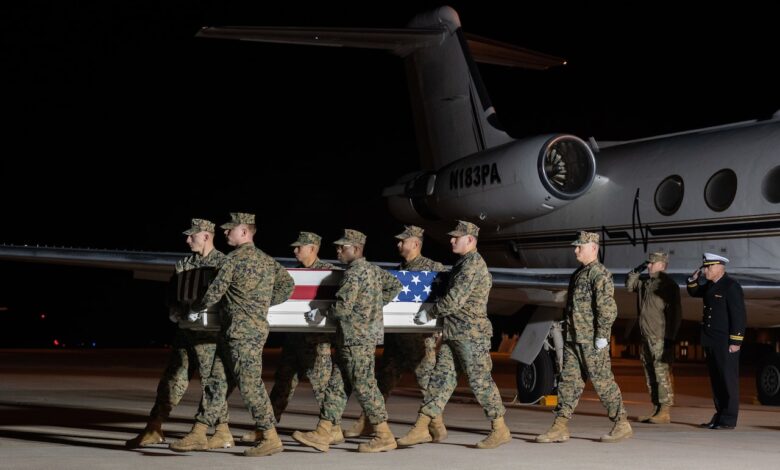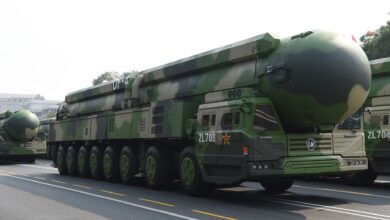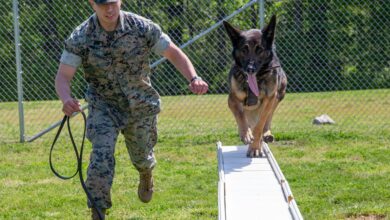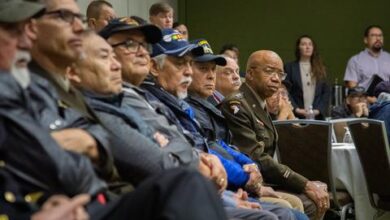Inside the Process of Bringing Our Overseas Fallen Home > U.S. Department of Defense > Story

When a U.S. service member dies while on duty overseas, a massive endeavor begins to get that person home with dignity and respect. Regardless of the fallen service member’s branch, that effort is coordinated by Air Force Mortuary Affairs Operations based at Dover Air Force Base, Delaware.
The dignified transfer of remains, as it’s called, is a serious mission that involves a lot of people, from licensed mortuary specialists and deployed service members to military chaplains and liaisons who support the families of the fallen.
While many people have seen crews carrying flag-draped transfer cases off an aircraft to an awaiting vehicle, that’s only a very small part of the work that goes into bringing home a fallen service member.
With Respect and Care
The effort naturally begins overseas, where the service member died. Once his or her remains are recovered, mortuary technicians work to get them to an evacuation point to fly them to Dover. Members of AFMAO’s Command, Control and Communications Center, known as C3, track those flights and start the process of contacting others within the chain of command.
“We call the [service] branch liaison, and we call over to the armed forces medical examiners to make sure everybody is tracking and that the remains are being directed to the port mortuary,” said Lucas Rigdon, a C3 mortuary control center specialist.
When the aircraft lands, the remains are taken off the aircraft by trained military carry teams — the service members you’ve likely seen carrying the flag-draped transfer case. And while that part might appear simple enough, it’s actually very technical, with precise and distinctive movements that are done in unison by the seven personnel assigned to the team.
“It is perfection because this is the one time that the family members will see their loved ones getting carried off that plane,” said Air Force Master Sgt. Christopher Gangloff, the section chief of the AFMAO Operations Support Division. He helps train the teams. “It is crucial that everything is done with extreme precision and extreme grace.”
This movement is called a dignified transfer and is carried out by highly trained carry teams at any time of day in any weather. The teams train for various environments and contingencies and learn to keep their own emotions in check.
“Sometimes — oftentimes really — you come face to face with grieving family members,” Gangloff said.
The carry teams pass the remains to the medical experts of the Armed Forces Medical Examiner System, which occupies a large building right beside AFMAO. These personnel perform autopsies on fallen service members and investigate their cause of death. When their work is complete, the remains are released back to the AFMAO port mortuary.
AFMAO: The Only Stateside Port Mortuary
When the port mortuary at Travis Air Force Base, California, closed in 2001, the Dover location became the sole port mortuary in the United States. Port mortuary specialists are licensed funeral directors who embalm, dress and restore the appearance of fallen service members.
“For us as embalmers, our goal is to preserve the fallen, restore them and send them home to their [families]. We do that with the most dignity, honor and respect,” said Port Mortuary Branch Chief Danielle Wilk, one of three licensed mortuary specialists in that section.
Most people generally understand the broad details of the embalming process. When it comes to the intricacies, however, many might not want to know them. Still, families must make these important decisions, and mortuary specialists must do what they can to prepare the family’s loved one accordingly, so parts of the process are worth noting.
One point of interest pertains to the strength of formaldehyde solutions used in embalming. Wilk said funeral industry standards use formaldehyde with a 2.5% concentration strength. AFMAO uses a higher concentration, between 5-10%, to help preserve the body longer because there are sometimes delays in interment.
“We don’t know when they receive remains or how long before the final internment,” Wilk said. “There are circumstances where an individual might be going overseas, or possibly to Arlington [National Cemetery],” where, according to the cemetery’s website, interments can take weeks or months to schedule and conduct.
Wilk also explained the four levels of viewability recommended to family members, meaning what they would suggest when it comes to what should be shown at a viewing. Service members who pass away with no visible injuries are considered “viewable.” Those who’ve needed slight work from restoration experts are considered “viewable for identification,” since they may not look exactly the way family members remember them. Head wraps are recommended for service members who have suffered injuries to the head or neck, while full body wraps are recommended when the service member suffered serious trauma and is considered unviewable.
“That full body wrap is then placed inside of the casket that the family has selected,” Wilk said. “Then we will drape the service member’s uniform with all the awards and decorations on top of that full body wrap, which allows the family to still have an open casket for nonviewable remains.”
However, despite their expert recommendations, it’s still up to the family to make the final decision.
“Even with a full body wrap, if a family elects to view their loved one, no matter their condition, they have every right to do so,” Wilk said.
Liaisons help family members decide what casket to choose. Metal and wooden caskets are available for burial, while wooden ones are also offered for cremation. After a family has made their selection, mortuary specialists and deployed airmen do several casket inspections to make sure there are no discrepancies or damage.
As an Army veteran, Wilk said it’s not the easiest job, but she takes great pride in it.
“Sometimes it’s a challenge to not think about the circumstances behind the sacrifice that’s been made. But for me, being strong and resilient and having a great team really is an important factor in getting by day to day,” she said. “It is a great honor and privilege to be able to still serve my country in this capacity.”
Preparing the Uniforms and Final Presentation
At AFMAO, service members, including airmen deployed on six-month rotations to Dover, help with many aspects of the preparation, except for embalming and restoration of the body. Some of them have roles in the uniforms section, a room filled with a variety of military dress uniforms, where they work with branch-specific liaisons to replicate the service member’s most up-to-date uniform.
“We prepare the uniforms, get them to the tailor shops, create the ribbon racks, steam, iron and put all that together,” explained Navy Senior Chief Petty Officer Jessica Zugzda, the sole Navy liaison at AFMAO. “We ensure that it’s completely ready to go and assist with the dressing and casketing of our service members.”
Much like at a post exchange, new badges, pins and other accoutrements line the uniform section’s walls, ready for use. Anything that isn’t directly on hand can be ordered and will arrive within 48 hours. An engraving station for dog tags, nametags, Purple Hearts and urns sits in the room’s corner, and a tailor shop on base can make alterations to the uniforms within a few hours, expediting the whole process.
The uniforms section also has the flag press, an important part of the preparation process.
“They [flags] come in boxes, and there’s a lot of wrinkles on those flags. So, to get them in pristine condition and as wrinkle-free as possible, this is where we start,” said Air Force Tech. Sgt. Patience Templeton, who’s on a six-month deployment to AFMAO.
The flags, which will eventually be draped over the caskets, are put through the press several times before getting a fine-tuning on a large table that doubles as an ironing board, where handheld irons get out any stubborn wrinkles.
Speaking of flags, AFMAO also has an honor guard program that trains other installations on how to do funeral honors, which are different than the presentation of colors at sporting events and other occasions. The program also coordinates flyovers and works directly with funeral homes to schedule honors for veterans and active-duty service members.
When the fallen service member is ready, an escort — typically from the service member’s unit — will be briefed on their role for the final leg of the journey.
If the service member is being buried at Arlington National Cemetery or within 350 miles of Dover, ground transportation will take them to their designated funeral home. Otherwise, the remains are generally flown in a chartered aircraft to an airport close to their destination. An honor guard will transfer the remains from the aircraft to a hearse — a process called a dignified arrival — before continuing to the chosen funeral home for the burial process.
Training the Trainers
All this work is done at Dover for service members who die in overseas operations, but deaths that occur on installations across the U.S. need to be supported locally. AFMAO trains those mortuary affairs airmen.
“We’re essentially the funeral director that’s reaching out to the installations to assist them,” said Matt Metschke, AFMAO’s case management branch chief. “We’re responsible for how they deliver to the family. That’s a direct reflection on our program here.”
Mortuary officer and technician courses for active-duty airmen are held at Maxwell Air Force Base, Alabama, the home of Air Education and Training Command. These officers and technicians are trained on how to inspect remains, do the necessary paperwork and, of course, support the families. They’re not considered funeral directors, though, because that takes years of higher education.
“They are the ones that are running the mortuary offices at their installation. So, when a death occurs, we are the ones that are training them in how to answer those calls and how to meet the families,” Metschke said.
In these classes, trainees practice explaining the entitlements to actors role-playing as family members and learn to work with the person authorized to make decisions regarding the remains.
“These actors are really giving it to them. Like, you may be in front of a family that’s really upset at the Air Force, or you might have a family that’s just non-communicative,” Metschke said. “So, they’re actually getting the best training that you could probably get because, traditionally speaking, you will face some of these kinds of situations.”
Trainees also learn how to set up a search and recovery site surrounding a death.
“They’re going to be the ones providing direct communication to a wing or a command post,” Metschke said. “Those folks are going to be reaching out to the mortuary officer to find out what’s going on … and then [they’re] working with us and the installation to provide the support, like, are they going to Dover, or are they going to remain in place?”
Trainees will also learn how to inspect funeral homes assigned to each installation to make sure they’re maintaining DOD standards.
“There is a difference for what we do in preparation to what a civilian funeral home might do, and that’s what the mortuary officer and technician do — provide that ground training to the funeral homes,” Metschke said.
Mortuary officers generally receive updated training every five years via a virtual course. National Guardsmen receive similar training at Dover.
Metschke said their goal is to provide comfort and care to the families as best as they can.
“It’s hard to pick up the phone and know what to say to some of those folks right away, but at the end of the day, what’s nice for them is they know that there’s someone here on the other side that cares,” he said. “They’re getting the person that is directing everything for their family member. … We’re going to go above and beyond every time.”
For the families of the fallen, the entire process is one that no one would ever elect to go through. It’s necessary, however, to get their loved one home to their final resting place. Thanks to AFMAO’s caring personnel, those services are provided with the utmost dignity, respect and love.






